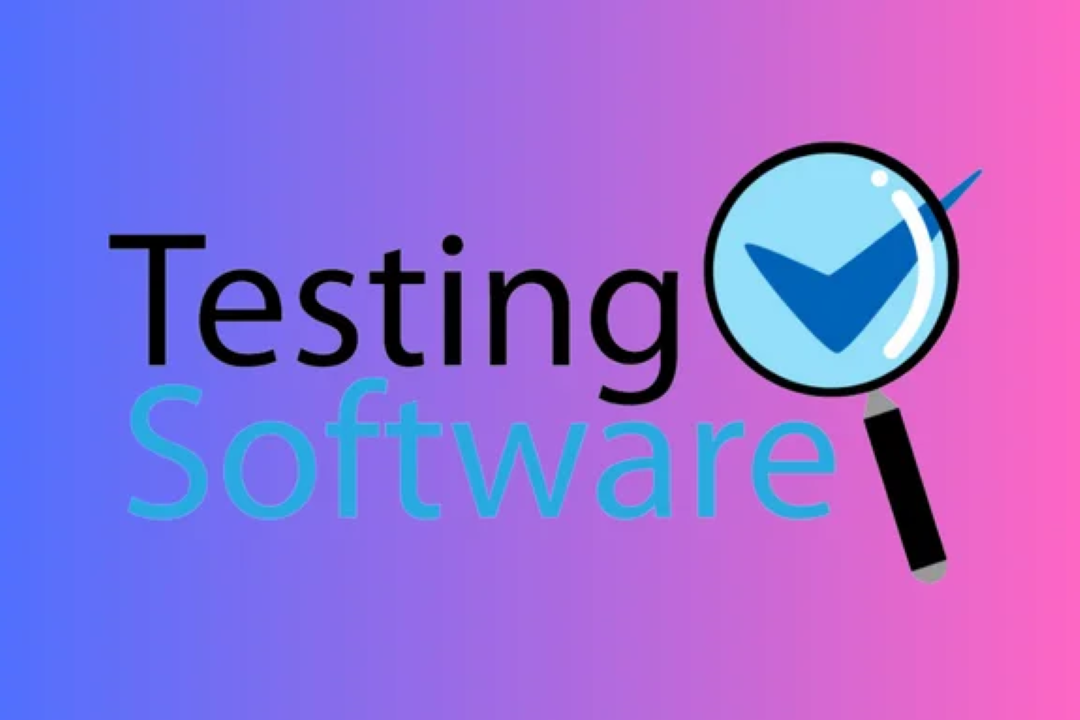Best Udemy Selenium Courses For Beginners
Udemy offers a variety of excellent Selenium courses specifically designed for beginners eager to di
Best Udemy Selenium Courses For Beginners
The best Udemy Selenium courses for beginners are designed to provide a solid foundation in automation testing, making them an invaluable resource for aspiring QA engineers and developers. These courses typically offer step-by-step instructions on setting up Selenium, understanding its core components, and writing effective test scripts using various programming languages like Java and Python. The inclusion of hands-on projects allows learners to apply their skills in real-world scenarios, significantly enhancing their understanding and confidence. Additionally, with access to quizzes, downloadable materials, and lifetime updates, these courses equip beginners with the essential knowledge and practical experience needed to succeed in the competitive field of software testing.
To Download Our Brochure: https://www.justacademy.co/download-brochure-for-free
Message us for more information: +91 9987184296
The best Udemy Selenium courses for beginners are designed to provide a solid foundation in automation testing, making them an invaluable resource for aspiring QA engineers and developers. These courses typically offer step by step instructions on setting up Selenium, understanding its core components, and writing effective test scripts using various programming languages like Java and Python. The inclusion of hands on projects allows learners to apply their skills in real world scenarios, significantly enhancing their understanding and confidence. Additionally, with access to quizzes, downloadable materials, and lifetime updates, these courses equip beginners with the essential knowledge and practical experience needed to succeed in the competitive field of software testing.
Course Overview
The course “Best Udemy Selenium Courses for Beginners” is meticulously crafted to provide a comprehensive introduction to Selenium, a leading automation testing tool. It covers the fundamental concepts and features of Selenium, enabling participants to understand its application in real-time testing scenarios. Through engaging lectures, practical demonstrations, and hands-on projects, learners will gain proficiency in writing automated test scripts using popular programming languages such as Java and Python. Additionally, the course emphasizes best practices in test automation and equips students with essential troubleshooting skills. By the end of the course, learners will be well-prepared to embark on their journey in software testing and automation, enhancing their career prospects in the quality assurance domain.
Course Description
The “Best Udemy Selenium Courses for Beginners” is designed to provide a foundational understanding of Selenium, focusing on its application in automation testing. This course covers essential topics such as setting up the Selenium environment, writing and executing test scripts in languages like Java and Python, and implementing best practices in test automation. Participants will engage in practical, real-time projects that allow them to apply their knowledge, troubleshoot common issues, and gain hands-on experience with web application testing. By the end of the course, learners will be equipped with the skills necessary to confidently start their journey in software testing and automation, enhancing their career opportunities in the technology sector.
Key Features
1 - Comprehensive Tool Coverage: Provides hands-on training with a range of industry-standard testing tools, including Selenium, JIRA, LoadRunner, and TestRail.
2) Practical Exercises: Features real-world exercises and case studies to apply tools in various testing scenarios.
3) Interactive Learning: Includes interactive sessions with industry experts for personalized feedback and guidance.
4) Detailed Tutorials: Offers extensive tutorials and documentation on tool functionalities and best practices.
5) Advanced Techniques: Covers both fundamental and advanced techniques for using testing tools effectively.
6) Data Visualization: Integrates tools for visualizing test metrics and results, enhancing data interpretation and decision-making.
7) Tool Integration: Teaches how to integrate testing tools into the software development lifecycle for streamlined workflows.
8) Project-Based Learning: Focuses on project-based learning to build practical skills and create a portfolio of completed tasks.
9) Career Support: Provides resources and support for applying learned skills to real-world job scenarios, including resume building and interview preparation.
10) Up-to-Date Content: Ensures that course materials reflect the latest industry standards and tool updates.
Benefits of taking our course
Functional Tools
1 - Selenium WebDriver: Selenium WebDriver is the core component of the Selenium suite that allows users to interact with web applications in a way that mimics real user behavior. It supports various programming languages, including Java, C#, Python, and Ruby, providing flexibility for beginners to choose the language they are most comfortable with. The course offers a detailed overview of how WebDriver operates, including how to navigate web pages, manage browsers, and automate tasks by simulating user actions. Students gain hands on experience writing WebDriver scripts to automate form submissions and click through web applications, which are essential skills in test automation.
2) Selenium IDE: Selenium IDE is a browser extension that provides an easy way to create automated tests with a simple and user friendly interface. It allows beginners to record and playback user interactions with a web application without writing code. The course includes a segment on using Selenium IDE to create basic test scenarios and understand how scripts are generated from recorded actions. This tool enhances learners’ understanding by visually demonstrating how test cases are constructed and executed, making it an ideal starting point for newcomers to automation testing.
3) TestNG: TestNG is a powerful testing framework inspired by JUnit and NUnit, designed to cover all categories of tests: unit, functional, end to end, and integration. Students learn how to configure TestNG, create test suites, and manage test execution and reporting. The incorporation of TestNG into the course provides a structured way to organize test cases and improve test management. TestNG’s features such as annotations and data driven testing are explored, enabling students to write more maintainable and scalable test scripts, which are vital for real world applications.
4) JUnit: For those using Java as their programming language, JUnit is essential for unit testing in Java applications. The course includes comprehensive instruction on JUnit, demonstrating how to create and run test cases, leverage assertions, and utilize test fixtures. Students discover how JUnit integrates seamlessly with Selenium to facilitate automated browser testing at a unit level. Learning JUnit broadens the students’ toolset, allowing them to adopt best practices in software testing and understand the fundamental principles of creating effective test cases.
5) Maven: Apache Maven is a build automation tool that can manage dependencies and streamline project builds in Java. The course introduces Maven as a means to manage Selenium project dependencies, making it easier for beginners to set up their testing environments. Students learn to create a Maven project from scratch, configure the `pom.xml` file, and utilize Maven commands for various tasks. Mastery of Maven enhances students' ability to manage larger projects efficiently and helps them understand the importance of version control in software development.
6) Git and GitHub: Version control is essential in any collaborative software project, and learning Git alongside GitHub is a fundamental aspect of the course. Students are introduced to Git commands that facilitate tracking changes in code, branching, and merging. The integration of GitHub in the curriculum provides learners with the practical experience of hosting their Selenium projects in a repository, collaborating with others, and contributing to open source projects. Understanding how to use Git and GitHub prepares students for industry standards, ensuring they can work effectively in team environments.
These tools collectively form a comprehensive training program that equips students with the necessary skills and knowledge to excel in automation testing using Selenium. The structured approach, combined with hands on projects, ensures that learners are job ready and capable of applying their skills in real world scenarios.
Certainly! Here are additional points to expand on each tool's importance and how they contribute to a comprehensive learning experience:
1 - Selenium WebDriver
Dynamic Element Handling: The course emphasizes handling dynamic web elements, which change their properties during runtime. This is particularly relevant for modern web applications that use AJAX and JavaScript frameworks like React or Angular. Students learn strategies to wait for elements and handle asynchronous behavior effectively.
Cross Browser Testing: Students are exposed to the intricacies of executing tests across multiple browsers, understanding the distinctions in rendering and behavior, which is crucial for delivering high quality web applications.
Integration with CI/CD: The practical integration of Selenium WebDriver with Continuous Integration and Continuous Deployment (CI/CD) tools like Jenkins is introduced, highlighting its role in automated testing within a DevOps pipeline.
2) Selenium IDE
Script Editing: Beyond simple recording and playback, students learn to navigate the script editor, enabling them to modify test cases, add assertions, and enhance the test scripts with custom commands, thereby fostering an understanding of the underlying automation logic.
Plugins and Extensions: The course highlights various plugins available for Selenium IDE that can extend its capabilities, allowing students to enhance their tests with advanced functionalities like data driven testing.
3) TestNG
Parallel Testing: TestNG supports parallel test execution, which is a significant advantage for speeding up the testing process. Students learn to configure their tests to run concurrently, thereby improving efficiency in large test suites.
Advanced Reporting: The framework’s reporting features, including generating HTML or XML reports, are explained. Students gain insights into how to analyze test outcomes and gather valuable metrics from test runs.
4) JUnit
Parameterized Tests: The course covers the creation and execution of parameterized tests in JUnit, allowing a single test method to be executed with different data sets. This technique is helpful for validating functionality across diverse inputs and enhances test coverage.
Integration with Build Tools: Students learn how JUnit works with build automation tools like Maven and Gradle, illustrating how to set up automated test executions as part of the build process.
5) Maven
Dependency Management: The intricacies of managing project dependencies, including the use of repositories and creating versions for libraries, are covered. This helps students understand how to maintain their projects without dependency conflicts.
Project Structure: Students learn about Maven’s standard project structure, which promotes consistency and best practices in software development, making it easier for teams to collaborate effectively.
6) Git and GitHub
Branching Strategies: The course explores various branching strategies, like Git Flow, that help students organize their work efficiently in a collaborative environment. Learners grasp how to manage features, bug fixes, and releases effectively using branches.
Pull Requests & Code Review: Students engage with the process of submitting pull requests on GitHub and participating in code reviews, fostering collaborative coding skills that are invaluable in a team setting.
Additional Tools and Concepts
Page Object Model (POM): The adoption of the Page Object Model design pattern is discussed. This design pattern encourages code reusability and maintainability by separating test scripts from the page specific functionalities.
API Testing Integration: To broaden the scope of testing, a section on integrating API testing (using tools like Postman or RestAssured) with Selenium tests is included, highlighting the importance of full stack testing in real world applications.
Test Automation Strategy: The course covers crafting an automation strategy, including deciding which tests to automate, prioritizing based on risk and return on investment, and understanding the balance between automated and manual testing.
Through these detailed points, students are equipped not only with the technical skills needed for testing but also with a comprehensive understanding of best practices, methodologies, and collaborations in the software development lifecycle (SDLC). This holistic approach prepares them for real world challenges in software testing environments.
Browse our course links : https://www.justacademy.co/all-courses
To Join our FREE DEMO Session: Click Here
This information is sourced from JustAcademy
Contact Info:
Roshan Chaturvedi
Message us on Whatsapp: +91 9987184296
Email id: info@justacademy.co












